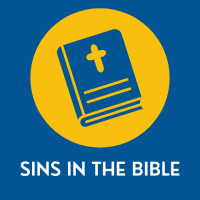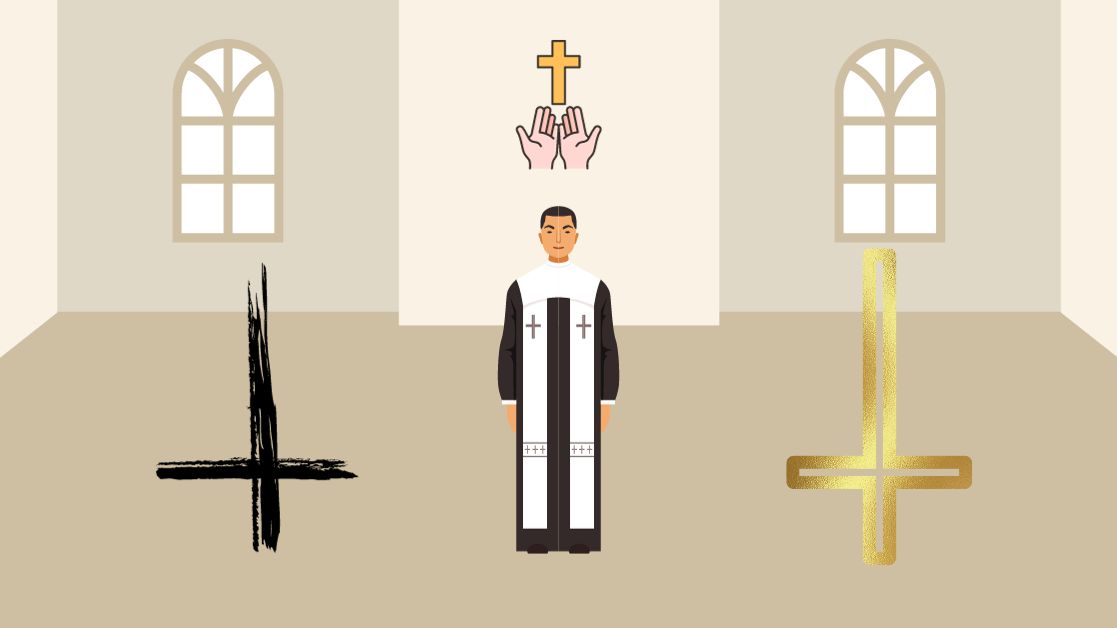The upside-down or inverted cross is a symbol that has intrigued and sometimes confused many throughout the ages. As a pastor with two decades of experience, I believe it is crucial to delve into the deeper meanings of biblical symbols, and this is no exception.
This post will discuss the significance of this symbol in the context of our faith.
The Upside-Down Cross: What Does the Bible Say About It?
The upside-down cross is often associated with negative connotations, misconceptions, and superstitions. Today, let us turn to the Bible to discern its true meaning.
The inverted cross symbol, often referred to as the Cross of St. Peter or the Petrine cross, holds a significant place in Christian tradition and history. While the Bible itself does not explicitly record the details of the Apostle Peter’s death, extra-biblical sources, and historical traditions shed light on the profound symbolism of this cross.
According to tradition and various extra-biblical sources, the Apostle Peter faced martyrdom during the reign of the Roman Emperor Nero. It is said that he was sentenced to crucifixion, a brutal method of execution, for his unwavering faith and commitment to spreading the teachings of Jesus Christ.
However, what sets Peter’s crucifixion apart is his humble request to be crucified on an upside-down cross. This act of humility was deeply rooted in his love and reverence for Jesus, the Savior he had followed and served throughout his life.
Just as Peter had expressed his devotion and love for Christ by his request, we are reminded of Jesus’s teachings on humility and servitude. Matthew 20:26-28 contains Jesus’ guidance to His disciples, where He emphasizes that those aspiring to be great should take on the role of a servant, and those seeking to be first should assume the position of an enslaved person.
These words were similar to the Son of Man, who did not come to be served but to serve and give his life as a ransom for many. Peter’s act of requesting an inverted cross exemplifies his understanding of this profound message.
The inverted cross, thus, serves as a symbol of humility in faith. Aware of his imperfections and shortcomings, Peter did not wish to be crucified in the same way as Jesus Christ, his Lord and Savior.
He felt unworthy to share the same physical position on the cross as the One who had given His life for the salvation of all humanity. This act of selflessness and deep reverence for Christ’s sacrifice has inspired Christians for centuries.
Furthermore, the association between the inverted cross and the papacy adds another layer of symbolism. According to Catholic belief, the Pope, as the spiritual leader of the Church, can trace his authority back to the Apostle Peter. This belief is based on Jesus’ words to Peter in Matthew 16:19. This connection between Peter and the papacy has led to the use of the inverted cross as a symbol of the Pope’s authority and spiritual lineage.
In John 21:18, Jesus foretold the challenging circumstances surrounding Peter’s eventual passing. The phrase “stretch out your hands” that Jesus used is widely understood to imply a death by crucifixion.
A Symbol of Contrition and Repentance
The upside-down cross can also be interpreted as a symbol of remorse and repentance. In moments of personal reflection and confession, Christians may invert the cross to represent their willingness to turn their lives around and seek forgiveness from God.
The Bible reminds us that God is faithful and just. Hence, He will forgive our sins when we confess them and turn from our wicked ways (1 John 1:9).
An Inversion of the World’s Values
In a world where materialism, pride, and self-centeredness often reign, the upside-down cross can serve as a powerful reminder of the countercultural nature of Christianity. It symbolizes a rejection of worldly values and a commitment to living a life centered on Christ’s teachings of love, humility, and service to others.
The Apostle Paul exhorts us not to conform to the patterns of this world but to be transformed by renewing our minds (Romans 12:2).
The Inverted Cross in Modern Culture
The upside-down cross has gained various symbolic meanings. It has been utilized in secular and occult contexts as a symbol of atheism, humanism, and opposition to Christianity.
Some black metal bands and horror movies have adopted it to convey devotion to Satan or demonic activity. It is often seen in tattoos, pendants, and clothing alongside messages rejecting God or promoting skepticism.
In these settings, the inverted cross expresses antagonism towards Christianity, a way to reject the truth of Christ and even mock His sacrifice. While an inverted pentagram is more commonly associated with the Church of Satan and Satanism, the inverted cross has also been employed in such contexts, including ceremonies like the unveiling of the Baphomet statue by the Satanic Temple.
However, the symbolic meaning of the inverted cross is heavily influenced by its context. In a world where righteousness is often ridiculed, and good values are distorted, such symbols can be used to oppose and undermine faith.
Bottom Line
In conclusion, dear brothers and sisters, the upside-down cross, when understood in its biblical context, carries a profound message of humility, repentance, and a rejection of worldly values. It reminds us of the sacrificial love of Jesus Christ and the transformative power of His grace in our lives.
Let us remember that symbols in Christianity should always point us toward a deeper relationship with our Savior, Jesus Christ, and inspire us to live out His teachings in our daily lives. As we contemplate the meaning of the upside-down cross, it may be a constant reminder of its central message: that through Christ, we find redemption, forgiveness, and eternal life.




